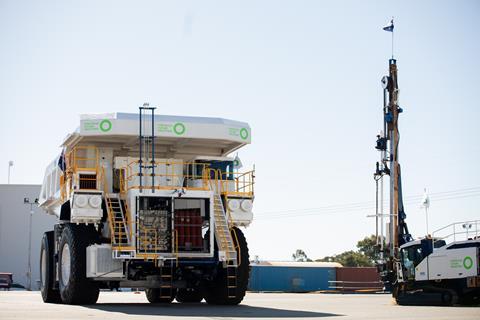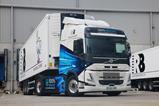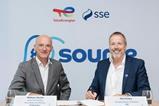The first prototype of a three-megawatt fast charger has been released by Fortescue Metals as part of its ongoing trials involving electric and hydrogen-powered heavy haulage trucks.

The company is currently conducting tests on an electric heavy haulage truck, nicknamed the “Road Runner,” developed in collaboration with Liebherr. This 240-tonne mining haul truck is equipped with a substantial 1.4MWh battery, weighing 15 tonnes, which was created by Fortescue’s Williams Advanced Engineering team.
The newly introduced fast charger, with a capacity of 3MW, is being commissioned to recharge the electric truck. The testing of this charger will take place at the Christmas Creek Mine in Australia, an operation partly supported by a nearby 60MW solar farm. Mark Hutchinson, the head of Fortescue Energy, announced testing of the fast charger will commence on-site in Q3 2023. The objective of this initiative is to gain insights into the performance of the truck under various duty and charging cycles.
“To have developed and delivered technology of this scale for on site testing is a huge feat. This is really exciting progress,” he said.
Comparatively, traditional electric passenger cars feature batteries with capacities ranging from 50kWh to 100kWh and are supported by fast chargers with outputs between 50kW and 350kW. In contrast, the scale of Fortescue’s electric trucks and their associated charging infrastructure is substantially larger.
In addition to electric trucks, Fortescue is also conducting trials with hydrogen fuel cell trucks at its mining sites. This aligns with the company’s broader strategy involving green Hydrogen. However, the viability of hydrogen fuel cell trucks in comparison to battery electric trucks within mine sites is under scrutiny. Christiaan Heyning, the head of decarbonisation at Fortescue, noted that both technologies will be tested on-site this year, with a focus on assessing their round-trip efficiency.
Fortescue’s exploration of battery electric vehicles extends to other modes of transportation, including trains. The company is engaged in research and development efforts at Williams Advanced Engineering (WAE), with plans to deploy an innovative “infinity train” at its Pilbara mines. This train operates on the concept that its batteries will be replenished through regeneration as the train travels downhill from the mine to the port, facilitating the return journey.

Furthermore, Fortescue is trialing “dual-fuel” trains that utilise green ammonia. These trains cater to customers who may not benefit from the height differential essential for the “infinity train” concept.


















